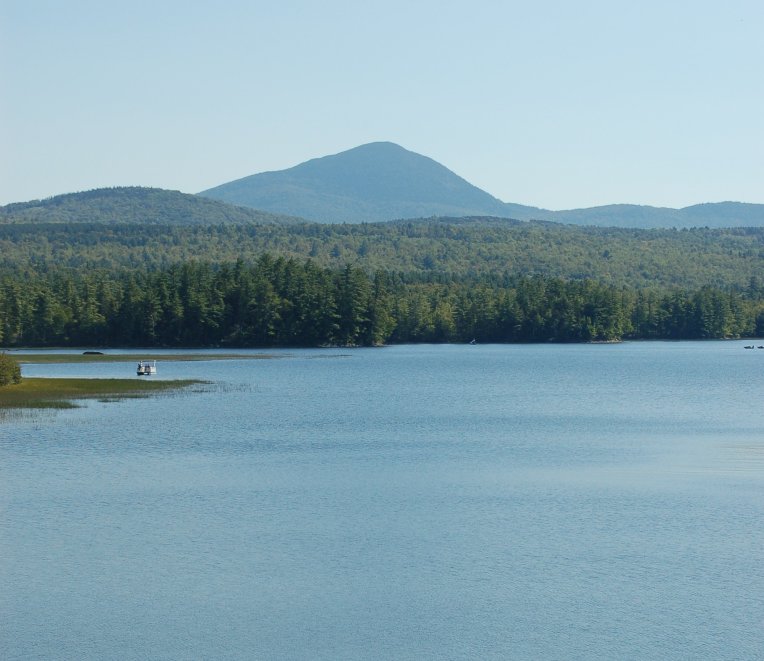
The Shop Land was originally shared on UMF Assistant Professor Luann Yetter’s blog. Author Sylvie Haslam is a senior at Mt. Blue High School and wrote about her family’s history in Weld as part of an assignment for Yetter’s class. The series takes a closer look at the Cushman family’s history, dating back to the 1800s.
WELD – My mom grew up on a family farm in the small town of Weld, which sits in the center of the state, small and unassuming. Until recently, downtown Weld mostly consisted of a general store and a school, but the store is now gone and the school no longer operates. Aside from a few lifelong, aging residents, these days most people in Weld are there for the lake, the mountainous hikes and the beautiful summer weather. An article in the Lewiston Evening Journal, written back in 1940, states that Weld had 437 inhabitants. That number has only gone down since that point; now about 415 year-round residents remain. In the same article reporter Mina M. Titus describes Weld as “nestled against the shores of beautiful Lake Webb and overshadowed by the dark wooded peaks of Mt. Blue and Tumbledown Mountains,” and says that “Weld has stood remote and ignored by the outside world.” I thought this was a beautiful depiction of the town. To me, Weld is a haven from the world, quiet and peaceful.
The Shop Land
My grandfather, Michael Graham, still owns the Weld farm my mom grew up on. It consists of a few hundred acres at the end of a dirt road. It takes about half an hour to get to the nearest grocery store. My parents will be building a house on a piece of the farmland, a section lovingly called “The Shop Land” by my mom and her siblings. This land was once home to a locally famed wood shop, called the Woodworkers of Weld, as well as an old farm belonging to a man named Will Cushman.
The land is surrounded by the forest on two sides, and leads out into a huge hay field. The air has the earthy smell of the woods and is absolutely free of all sounds but those of nature. The main road is too far away to hear, so all that remains is the calling of the phoebes and the trickling of the nearby stream. It is beautifully tranquil.
My mom has always been enchanted with the land: “There was that old cellar hole and also some old perennials that had seeded themselves,” she said. She remembers her daily visits to the flowers during the spring. They were “dark, dark purple columbine and roses and lilies.” They originated from Will Cushman’s farm, leftover from the gardens of Will’s wife. “They were the survivors from this garden a hundred years earlier,” she recalls, “growing away from anything, with no one taking care of them.”
The Cushman Brothers
Years ago, my grandfather inherited his farm from his “Uncle” John, a man who was not his real uncle. John acted as a grandfather figure for my grandpa through most of his life. John and his wife, Sadie, adopted my grandpa’s mom, a distant cousin of some sort.
Uncle John’s full name was John Cushman. His father, Jesse Cushman, and Jesse’s brother Will both owned farms on the land. Will’s isn’t there anymore but Jesse’s original farmhouse is now my grandparents’ house.
My Aunt Penninah, a genealogist, has a deed from October 28, 1864. It is a record of Simeon Cushman of Carthage selling the land to Maria Cushman for a hundred dollars. Both Jesse’s and Will’s farmhouses were likely built shortly after that time. The brothers must have shared the expansive fields that make up a large part of the property. I imagine they used the fields for haying, grazing animals and growing crops like beans and corn, things that would last through the winter. This is similar to the ways my grandfather uses them currently. They must have preserved their crops for the harsh Maine winters, since they probably relied on their farm for survival. Now, my grandpa can just go out to the store when his larder gets low.
Will Cushman married a woman named Olive Ella Russell. They had a son together, named William after his father. Will and Olive lived on their farm until they suffered a fire in the 1920s, when they moved away. They later both died of heart related conditions, Will first and Olive a few years later. Their son William had two kids of his own, Delsie and Freelon. Freelon tragically died at only thirty-seven, and Delsie had no children, so, from what I have seen, that branch of the family ended there.
Jesse’s son John, the one and only Uncle John, who gave the farm to my grandfather, was born around 1900. John grew up on the farm on Cushman Road and worked as a teamster in Temple, pulling logs. When Will’s farmhouse burned down, his barn had remained intact. When John came into the possession of the two farms, he didn’t need the second barn so he decided to do something with the extra space. John was very active in the town government and had served for years as a selectman and a sheriff. In his lifetime, he had seen the loss of many little mills that had dotted the landscape of the town, and with them had gone many people. Happy to promote commerce in Weld, he rented the barn to a local artist named Seaverns Hilton to use as a shop for his craft. Whether Hilton approached him or vice versa, John must have been happy to encourage business in Weld.
Sylvie Haslam is a senior at Mt Blue High School who has lived in the Farmington area her entire life. She loves reading, writing and chickens, not necessarily in that order.




